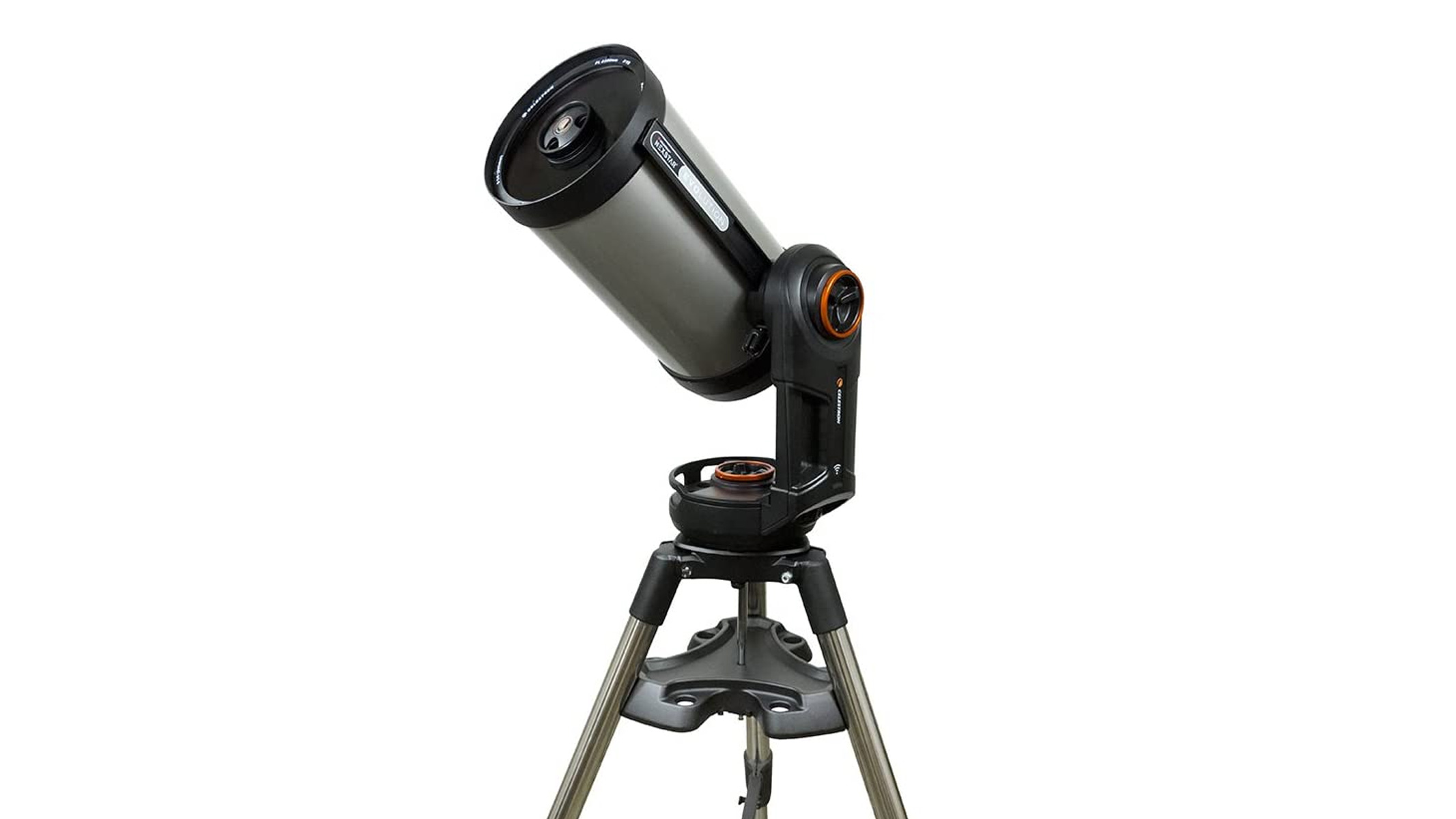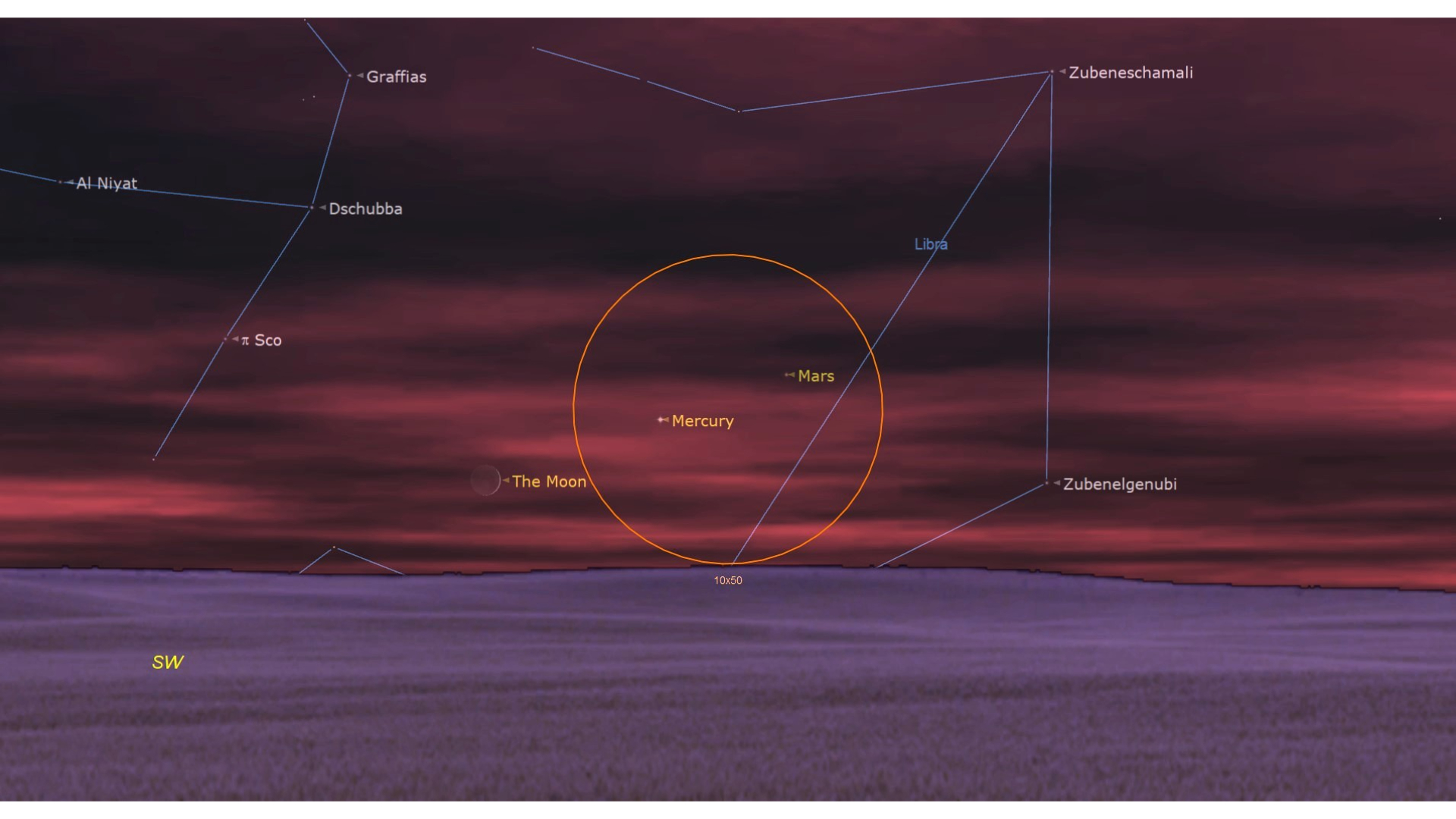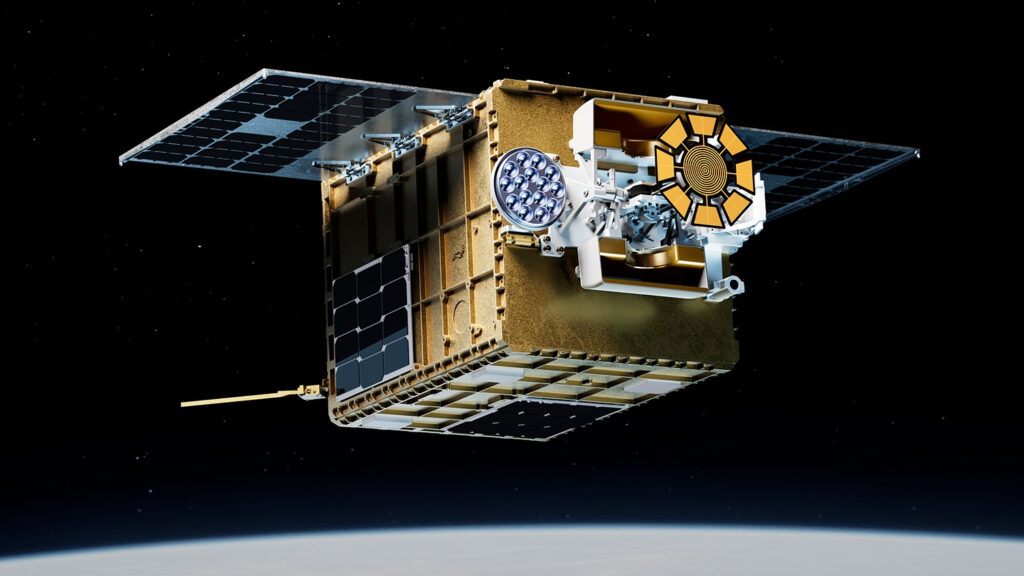Now Reading: See a razor-thin crescent moon line up with Mars and Mercury at sunset on Oct. 23
-
01
See a razor-thin crescent moon line up with Mars and Mercury at sunset on Oct. 23
See a razor-thin crescent moon line up with Mars and Mercury at sunset on Oct. 23

Look to the southwestern horizon at sunset on Oct. 23 to see the slender form of the crescent moon shine close to Mercury and Mars in the evening sky.
The 6%-lit waxing crescent moon will be visible roughly 5 degrees above the horizon as the sun sets on Oct. 23, with Mercury appearing as an “evening star” to the upper right of its sickle-like form and the red light of Mars shining just beyond, to form a cosmic lineup in the evening sky.
All three worlds will lie within 10 degrees of each other — roughly the width of your clenched fist held at arm’s length against the night sky — with Mercury and Mars close enough to comfortably share the field of view of a pair of 10×50 binoculars. But remember – even just glancing at the sun with a pair of binoculars can lead to permanent loss of vision. Be sure to use a trusted website like TimeandDate to check sunset times for your locale and ensure that our parent star is well below the horizon before attempting to view the moon beside these planets with a magnifying aid.
Celestron NexStar Evolution 925 Computerised Telescope

The Celestron NexStar Evolution 9.25 is one of the best telescopes you can buy. Boasting a 9.25-inch aperture and a whole host of accessories, this is top-of-the-range gear. The remote operability means it is easy to track celestial objects from your phone. Add to that a powerful lithium-ion battery, allowing for ten hours of uninterrupted stargazing.
The razor-thin form of the crescent moon will make for a challenging target to spot against the glow of the setting sun on Oct. 23, just two days out from its new moon phase on Oct. 21. The moon, Mercury and Mars will set less than an hour after the sun, so be sure to stake out a vantage point with a clear view of the southwestern horizon to ensure a good view of the solar system parade.

Mercury’s tight orbit around the sun will see it depart Mars to travel leftward in the direction of the constellation Scorpius in the days ahead, as the crescent moon grows thicker ahead of its first quarter phase on Oct. 29, when its entire right side will be lit by direct sunlight.
Stargazers interested in getting a closer look at the wonders of the night sky should check out our roundups of the best telescopes and binoculars available in 2025, while those new to the hobby should read our roundup of the best smartphone astronomy apps for navigating the post sunset realm.
Editor’s Note: If you would like to share your astrophotography with Space.com’s readers, then please send your photo(s), comments, and your name and location to spacephotos@space.com.
Stay Informed With the Latest & Most Important News
Previous Post
Next Post
-
 012024 in Review: Highlights from NASA in Silicon Valley
012024 in Review: Highlights from NASA in Silicon Valley -
 02Panasonic Leica Summilux DG 15mm f/1.7 ASPH review
02Panasonic Leica Summilux DG 15mm f/1.7 ASPH review -
 03From Polymerization-Enabled Folding and Assembly to Chemical Evolution: Key Processes for Emergence of Functional Polymers in the Origin of Life
03From Polymerization-Enabled Folding and Assembly to Chemical Evolution: Key Processes for Emergence of Functional Polymers in the Origin of Life -
 04How New NASA, India Earth Satellite NISAR Will See Earth
04How New NASA, India Earth Satellite NISAR Will See Earth -
 05And Thus Begins A New Year For Life On Earth
05And Thus Begins A New Year For Life On Earth -
 06Astronomy Activation Ambassadors: A New Era
06Astronomy Activation Ambassadors: A New Era -
07SpaceX launch surge helps set new global launch record in 2024


















